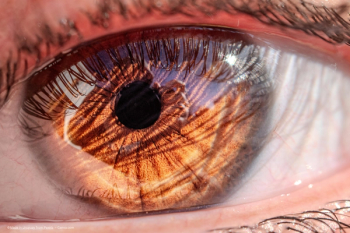
SLT a new option for pseudoexfoliative glaucoma
SLT presents a safe and efficacious treatment option for pseudoexfoliative glaucoma patients.
Pseudoexfoliation syndrome (PXFS) is a disease characterized by the accumulation of abnormal fibrillar extracellular material in ocular structures. When, however, this syndrome is associated with increased intraocular pressure (IOP) and optic nerve damage it is known as pseudoexfoliative glaucoma (PXFG).
Reports on the rate of glaucoma development amongst PXFS sufferers vary in the literature. In 2002, a report by Puska and co-workers reported a conversion rate of 3.2% PXFS cases per year to PXFG.1 Elsewhere, a team led by Jeng found that, in patients with PXFS, the probability of developing glaucoma was 44% after 15 years2 whilst a study by Grodum, et al., found 55.1% of PXFS patients went on to develop glaucoma after a mean of 8.7 years.3 In the Early Manifest Glaucoma Trial, the risk of glaucomatous progression over a six-year period was found to be 2.2 times higher in PXFG patients, compared with non PXFG sufferers.4
The labile nature of IOP, and the high diurnal IOP fluctuations experienced by sufferers, makes exfoliative glaucoma one of the most difficult forms of open-angle glaucoma to manage.
Argon laser trabeculoplasty (ALT) has been used to treat PXFG patients with excellent initial success, however, many studies have shown that there are risks involved with this procedure: post-treatment increase in IOP, coagulative damage and scarring to the trabecular meshwork, and it may also limit the efficacy of further non-surgical therapy. Thus, the number of users of ALT has been dwindling in recent years. Selective laser trabeculoplasty (SLT), on the other hand, has been shown in studies to be equally efficacious to ALT in reducing IOP, but this procedure is without the side effects that are more commonly seen with ALT, such as thermal damage to the trabecular meshwork.
Proving the point
To better evaluate the response to SLT in eyes with PXFG, a retrospective chart review of patients who underwent SLT from January 2000 to December 2005 was performed (571 eyes in total). Of those, 24 eyes of 21 patients (11 male, 10 female; mean age 72 years) had either PXFS or PXFG and were available for analysis.
Newsletter
Get the essential updates shaping the future of pharma manufacturing and compliance—subscribe today to Pharmaceutical Technology and never miss a breakthrough.










































